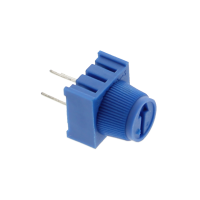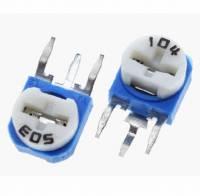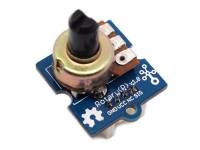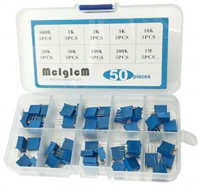Trim potentiometer for electronic circuits
Trim potentiometers are variable resistors within an electronic circuit. In contrast to rotary potentiometers and slide potentiometers, the level of the resistance is not directly controlled by a hand-operated regulator, but is adjusted directly on the potentiometer with a small screwdriver.
Potentiometers have a decisive advantage over their product relatives: they are available in incredibly small sizes and can therefore be used extremely flexibly. Many digital sensors have such a trimming potentiometer, by which the threshold value for the signal change (HIGH/LOW) is regulated.
Rotary potentiometers - rotatable resistors
Resistors fulfill an essential function within a circuit: They influence how the electric charge is set in motion within an electric current.
Rotary potentiometers act as mechanical resistors; the resistance applied is regulated by a rotation of the potentiometer's rotary knob, which gives the potentiometer its name. Within microelectronics, it is thus possible, for example, to determine the luminosity of an LED.
So that you can also effectively integrate rotary potentiometers into your home project, we recommend paying attention to the pin spacing. Within the Arduino microelectronics this grid dimension is 2.54mm.
Sliding potentiometers - mechanical resistors for your project
Just like rotary potentiometers, slide potentiometers also fulfill an important function within an electrical circuit. This is quickly explained by the name: Unlike the rotary potentiometer, where the electrical resistance is regulated with a rotary movement, the level of resistance in a sliding potentiometer changes by adjusting the controller.
This gives an advantage over the rotary potentiometer, but also a disadvantage. The disadvantage quickly becomes obvious just by looking at the potentiometer. Sliding potentiometers are comparatively large in direct comparison to rotary potentiometers. However, the advantage makes up for this in many cases: The position of the potentiometer visually tells us the level of resistance at the same time.






















